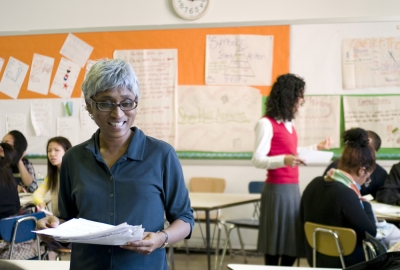
New Directions for Data Use in Schools
Joseph P. McDonald (September 2018)
By the first decade of the 21st century, the idea of data use in education had swept into U.S. schooling from other fields, such as manufacturing, sports, and medicine. Its enthusiasts included funders, entrepreneurs, policymakers, and district leaders eager to help foster the use of data in schools. They argued that data could drive accountability systems and provide signals about where schools needed to improve—and that this could be particularly game changing for schools that were impacted by poverty and generally low-performing.
Yet, how exactly teachers might use data to inform their work was largely unspecified. Little evidence was available to answer the question: “What kinds of school and classroom organizations, cultures, materials, and practices would help teachers use data in ways that actually benefit students’ learning?”
In 2014, with support from the Spencer Foundation, the Research Alliance set out to examine how teachers in nine New York City elementary schools were using data to inform their classroom practice, how schools were supporting them in this effort, and to what effect. The study focused on literacy instruction in 4th and 7th grades, in schools that had high concentrations of students living in poverty and that had been identified by their networks or community school districts as avid data users. We conducted in-depth interviews and field observations in these schools, over a two-year period.
Our new practice brief, New Directions for Data Use in Schools, draws on the study’s findings to highlight several keys to successful data use in teaching, including:
- Developing a broad view of assessment data and knowledge of its strengths and limitations;
- Strong content knowledge among teachers;
- Cultivating student ownership of data; and
- Building on data use to improve other aspects of schools’ organizational capacity.
The brief also proposes several new directions that educators can take to help make the most of data, including building a “data-wise” culture in your school, learning to curate data use materials, and encouraging student agency.
A full account of the study’s key findings is available in the book Data and Teaching: Moving Beyond Magical Thinking to Effective Practice by Joseph P. McDonald, Nora M. Isacoff, and Dana Karin (Teachers College Press).

